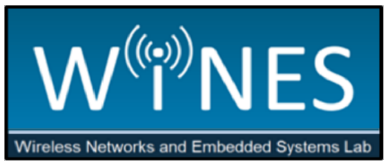Education
- Ph.D. in Computer Engineering (current) - Northeastern University
- B.Sc. in Computer Science and Mathematics (2023) - Cleveland State University
Research Interests
- Artificial Intelligence (AI) in Wireless Networks
- Adversarial Machine Learning (AML)
- Earth-to-Satellite Communication
- Open Radio Access Network (O-RAN)
- Coexistence Of Heterogeneous Spectrum Technologies
- Internet of Things (IoT)
Tamerlan Aghayev is a Ph.D. Student in Computer Engineering at the Institute for the Wireless Internet of Things at Northeastern University under Prof. Tommaso Melodia.
In 2025, he joined the WiNES Lab as a Ph.D. Student with a concentration in Computer Vision, Machine Learning, and Algorithms. He graduated as a department valedictorian from Cleveland State University in 2023 with Bachelor of Science in Computer Science. His current research efforts are focused on adversarial machine learning in O-RAN, and coexistence of heterogeneous spectrum technologies.
Publications
2024
Conference Papers
In satellite communication systems, the high sensitivity and vast coverage area make them prime targets for potential attackers. Given the integral role satellites play in modern communication, navigation, and observation systems, any vulnerability can have cascading effects on various sectors, from military to civil applications. On the other hand, recent exponentially growing IoT devices expose a potential security issue to the satellite communication running on the shared spectrum. In this paper, we for the first time propose to launch a Man-in-the-middle attack from ubiquitous IoT devices to spectrum-shared Satellite communication (I2S Attack) at a low cost but vast impact. The key idea is to use a compromised IoT device’s OFDM signal to emulate satellite’s MSK signals. Specifically, we discussed the feasibility of signal emulation, introduced the theory of I2S Attack, captured real-world satellite signals, and conducted simulations. The simulation result shows that we can achieve up to 65% emulation similarity between OFDM and MSK signals.
Link2023
Conference Papers
The increasing number of satellites in orbit has led to a growing reliance on third-party service providers for data transfer between Earth and space. Traditional approaches to managing satellite communications require human intervention, which becomes more burdensome with the escalating number of satellites. This research addresses the need for an efficient and automated system to optimize service provider selection for NASA space communication. Previous research has utilized human-operated approaches for service provider management. Our study fills a gap by developing a cognitive algorithm that automates and optimizes the selection process based on various parameters, such as data volume, priority, quality of service and cost. This novel solution reduces user burden, facilitates service management, and contributes to the development of cognitive spaceflight missions, ultimately supporting NASA’s research into Cognitive Communications technology. The algorithm design consists of three major steps: modeling data, developing a Link Selection Algorithm (LSA) based on a grading system, and applying machine learning using linear regression. The LSA evaluates providers based on user-defined constraints, considering factors such as delivery time, cost, and quality of service. We define a suitability metric which allows our algorithm to make a recommendation to a user regarding which commercial service providers to select. The addition of Linear Regression predicts the future suitability value. Our main findings demonstrate that the resulting algorithm can autonomously manage connections between satellites and providers, maximizing communication channel efficiency. This research has significant implications, as it not only addresses a pressing issue in satellite communication management but also advances the field of cognitive spaceflight missions.
Link
